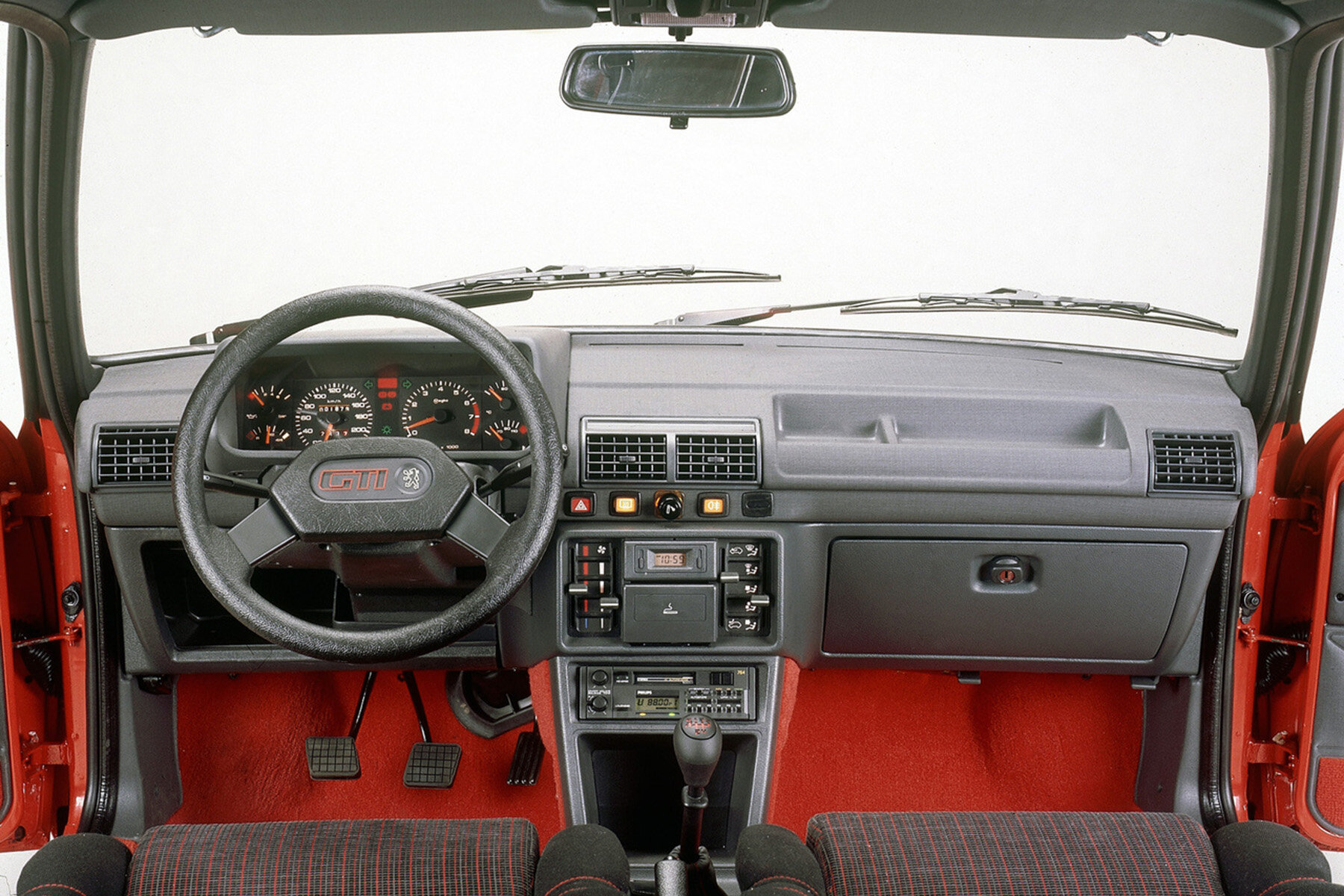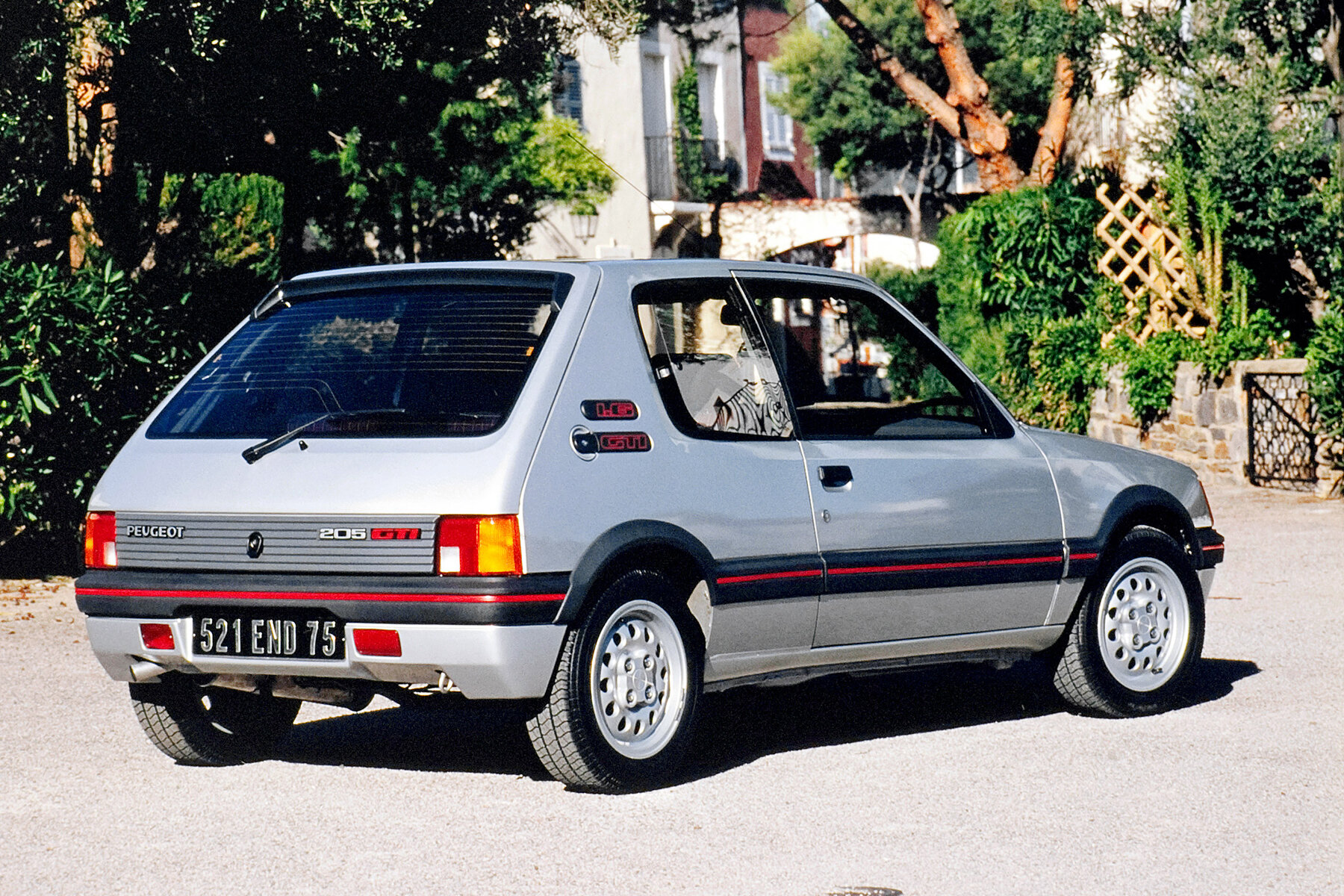The Peugeot 205 GTI is considered to be one of – if not the – best hot hatchbacks of the 1980s. Blessed with fine styling, great handling, and cool appeal, it’s hard to resist one. Here’s our guide to buying the best.

Is there a better-looking hot hatchback than the Peugeot 205 GTI, built between 1984-1994?
► The full Peugeot 205 GTI (1984-1994) buyers guide
► Everything you need to check for when buying a 205 GTI
► Search Peugeot 205 GTIs for sale on Classic Cars for Sale
When it comes to twisty B-roads, the 205 GTI is an absolute belter, and it’s a car capable of putting a huge smile on your face. Whichever engine you choose, you’ll be getting a smooth and punchy power plant, and while the extra torque of the 1.9 is nice, the smaller unit is a real firecracker. You certainly won’t feel short-changed by opting for the 1.6. What sets the 205 apart from other hot hatchbacks though is the terrific handling, the light weight and grippy front end.
Peugeot 205 GTI buying guide
BODYWORk
As with all performance cars you’re looking at, you’ll need to watch for accident damage. Get a history check done, and keep an eye out for distortion of the front chassis legs, inner wings, and boot floor. Misaligned panels and evidence corrosion in odd places should ring alarm bells too.
Bodyshells were galvanised from 1987 but corrosion is always a possibility. A good look underneath is advisable, focusing on the floorpan, the suspension mounting points, the box section around the fuel tank, and where the floor meets the bulkhead. The inner wing around the front strut turrets is another potential rot-spot, as are the windscreen surround and the rear quarter panel. Rust can develop in the latter when a spot weld at the rear of the door aperture breaks, allowing muck and moisture in – replacement panels are very hard to find too (as are GTI-specific bits).
Paint quality wasn’t the best, so look out for lacquer peel and general wear and tear. Often the only thing to do is to repaint an entire panel as opposed to correcting any seemingly small imperfections. So, if you’re looking at a car that’s had paint, ask why – and don’t think the worst.
ENGINE
Apart from the potential for leaky head gaskets, and the need for regular cambelt and fluid changes, both the 1.6 and 1.9-litre engines are fundamentally strong. A smoky exhaust is often due to brittle valve stem oil seals, while most problems relate to poor running caused by faults with the air-flow meter or cold-start valve. The problems can be exacerbated by inexpert fiddling with settings, so a specialist diagnostic check is worthwhile before you replace any parts. An obvious ticking sound may be down to a cracked exhaust manifold – generally between cylinders one and two – but it’s not a difficult fix.
INTERIOR

Not the most rugged interior, but the 205 GTI’s cabin is par for the course for a 1980s hot hatch, Volkswagen Golf aside.
Like all French cars from this era, 205 GTIs aren’t known for their toughness and integrity on the inside, so check carefully for wear and tear and ensure everything is working. Worn seat bolsters are a particular problem and the striped cloth is almost impossible to source now – it is easier to sort on leather-trimmed cars. Clocking isn’t unheard of and speedometer heads can fail with regularity.
ELECTRICS
French electrics aren’t renowned for their integrity, so test all powered items. Some come with electric windows and central locking, so make sure they all work as they should.
The convertible CTI was a popular model, and got an electric hood from 1990. Check the operation and condition carefully though. Popular on hatches was the sunroof option which was sealed by a vacuum system with the engine running – operating the handle released pressure in the seal so make sure it’s working okay, and check for signs of water leaks in the cabin and rust around the drain holes.
RUNNING GEAR
Gearbox issues are quite common so watch for crunchy gearchanges or a particularly slack-feeling gear lever. The latter can normally sorted by refurbishment of the linkage, including the balljoint bolted to the front subframe, which is a particular weak point. Clutches aren’t a particular problem unless abused, but stiff operation points to a cable in need of replacement, which can be a fiddly job. 1.6 cars can suffer from failure of the outer driveshaft joint, which is made worse by lowered suspension putting extra strain on them.
BRAKES
There are a few suspension issues to watch for, the most serious being failed rear radius arm bearings which, left unchecked, will damage the axle. Most have been rebuilt by now – or are due to be – so check the history and look for wonky rear wheel alignment – it’s a £700+ fix if damage has occurred. Front wishbone bushes can wear quickly but are easy to sort with a new replacement arm, and it is worth checking for wear in the steering rack and bushes on cars without power steering as the steering effort puts a strain on components. Corroded brake pipes and failed ABS on post- 1990 cars are other points worth watching for as is the tell-tale rumbling of failed wheel bearings.
Should you buy a Peugeot 205 GTI? The CCFS Verdict
No doubt about it, the 205GTI is a cracking hot hatchback. And everyone knows this, as evidenced by the massive hikes in values for good examples since 2015 – it’s now ahead of the Volkswagen Golf GTI and out on its own. It does have a few foibles though, and abused and modified cars are still out there so you need to buy carefully. For maximum smiles-per-mile, buying one that has been cherished by an enthusiast is our advice then.
You might also like

Maybe the best view of the 1984-1994 Peugeot 205 GTI
Peugeot 205 GTI 1.6 specs and details
Production 1984-1994
Engine capacity 1580cc
Cylinders 4-inline
Valvetrain OHC, 8-valve
Maximum power 105bhp@6250rpm
Maximum torque 99lb ft@4000rpm
Maximum speed 116mph
0-60mph 8.6sec
Fuel economy 29mpg
Gearbox five-speed manual, front wheel drive